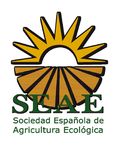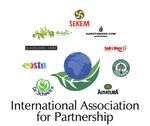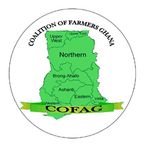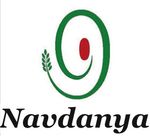Membership Vote on the Best Practice Guideline for Agriculture and Value Chains, version 1.0
←
→
Page content transcription
If your browser does not render page correctly, please read the page content below
Membership Vote on the Best Practice Guideline
for Agriculture and Value Chains,
version 1.0
Final approval vote
Electronic Membership Vote – Closes on 16 December, 2013
financially supported byMembership Vote on the Best Practice Guideline for Agriculture and Value Chains, version 1.0
Dear IFOAM Members, dear Stakeholders,
You are used to voting on the approval of IFOAM norms. This time we are excited to bring the Best Practice Guideline for Agriculture and
Value Chains to this electronic General Assembly. Unlike norms, which describe minimum requirements and draw lines of non-conformity,
the Best Practice Guideline describes the objectives of the organic movement and how Organic Agriculture looks once we have achieved
those objectives. It provides an inspiration and guidance for continuous improvements and developments. This work is based on decisions
of the General Assembly (in 2010 and 2011). The product of almost two years’ work convened by IFOAM through the Sustainable Organic
Agriculture Action Network (SOAAN), it is now up to the IFOAM Membership to vote on approval of this document.
Going forward, IFOAM intends the Best Practice Guideline to serve as a core document of IFOAM’s contribution to the global discussion
on sustainability, both within and outside the organic sector. It is intended to help more fully manifest the Principles of Organic Agriculture
worldwide and to show the organic movement as a leader across a full spectrum of sustainability issues pertinent to agriculture and its
value chains. We encourage use, debate, and refinement of this first version. Through the intensive multistakeholder development process
we have convened since February 2012 – and intend to continue – we are confident of its value as a publicly accessible resource, useful in
a variety of ways. The Best Practice Guideline is intended to be a living document; once approved it will be subject to improvements and
amendment through motions to future General Assemblies, starting in Istanbul in 2014.
The World Board encourages you to participate in this electronic voting process, and supports a “yes” vote to approve the Best Practice
Guideline for Agriculture and Value Chains. Your voice in this process is highly important.
Thank you and best regards,
Andre Leu, President Markus Arbenz, Executive Director
1The World Board’s Motion and your Vote
The World Board’s Motion Submitting your Vote
With this membership vote, the World Board moves to approve Voting is open to IFOAM Members starting October 16, 2013
the Best Practice Guideline for Agriculture and Value Chains as and ending December 16, 2013. To cast the vote, you need
a first finalized public version. You can access the full draft of to log in using the Membership ID and password included in
the document here. the e-mail you received with this document. Votes cast by fax,
e-mail, regular mail or in person are also valid. Name of the
member, Membership ID and a clear indication of Yes or No
must be included. Please send your fax to +49 228 926 5099.
Members can access the survey HERE to vote on the following
question:
"Do you agree with the approval of the Best Practice
Guideline for Agriculture and Value Chains?"
YES, I approve NO, I reject
IFOAM World Board members (top left to bottom right):
Volkert Engelsman (The Netherlands), Roberto Ugas (Peru), Manjo Smith
(Namibia), Eva Torremocha (Spain), Frank Eyhorn (Switzerland), Andre Leu
(Australia), Gabriela Soto (Costa Rica), Matthew Holmes (Canada), James
Cole (Ghana) and Mathew John (India)
2Best Practice Guideline - Background and Purpose
Background Uses of the Best Practice Guideline
You can access the history of the process of development The text of this document is intended to be formative, not
of the Best Practice Guideline here, including earlier drafts, normative. It is not intended as a compliance document per
consultation comments, friendly amendments, and results. se. Its possible uses include:
All motions submitted in the recent consultation round
were resolved by the SOAAN Secretariat and IFOAM World • Serving as guidelines for improving the ecological,
Board into friendly amendments, so there is no need for a societal, cultural, and economic sustainability of farms
separate voting round on motions. The current version has and businesses;
been improved through numerous minor revisions, based on • As a basis for setting research and development agendas
submissions during the recent consultation period. No major for improving organic and sustainable farming and related
substantive changes have been made. value chains;
• Serving as a benchmark for programs, operations, and
sbandry
sustainability assessment tools for agriculture and its
Biodiversity
ere
Animal Hu
value chains;
osph
Atm
Soil
y
erg
ter
Wa
En
Inv
est dG
en
de
r
• Promoting the development and use of indicators and
me Ecology an
metrics to assist in an operation’s self-evaluation or
y
nt uit
Eq
Local od
Ec eliho
and R onomy t Liv
esilien
ce Best Practice
Righ
external evaluation and transparency;
Economy
Flower Society Labor Rights
Markets and Trade
Agriculture
Waste/
and Value Safety and • Enabling assessments of the regional and global impact of
Materials/ ts Chain
specified sustainability practices;
Hygiene
an
Contamin
Accountability Culture
ic e nt
Co
m mu
• Informing and influencing policy agendas of governmental
list m nit
Ho nage y
and non-governmental entities;
Fo S
od ov
Ma
an
y
lit
d
Se re
bi
Pro
cu i g
ta
tion
rit ni
e
un
du
y ty
• Providing a resource for capacity building, education, and
co
ct
ipa
Ac
Qu
tic
alit
Par
raising awareness about sustainability issues.
y
Structure of the Best Practice Guideline
3Assistance, Discussion, Appreciation
The Best Practice Guideline Appreciation
Download The Best Practice Guideline for Agriculture and IFOAM wishes to thank all of its partner organizations in the
Value Chains version 1.0 HERE. Sustainable Organic Agriculture Action Network for their
ongoing contribution and support of this project.
Assistance
Questions (both technical or procedural) regarding the
Best Practice Guideline can be submitted to David Gould,
IFOAM Value Chain Facilitator and SOAAN Secretariat
d.gould@ifoam.org.
For any question on the submission of your vote, please
contact communication@ifoam.org.
Leading
Organic
Alliance
INOFO
The development of the Best Practice Guideline was made
possible through the generous funding of
4You can also read


























































